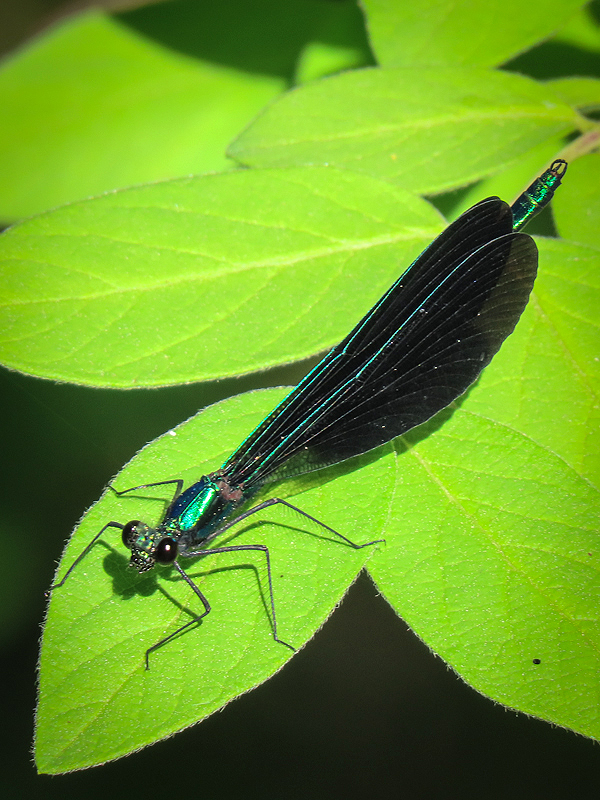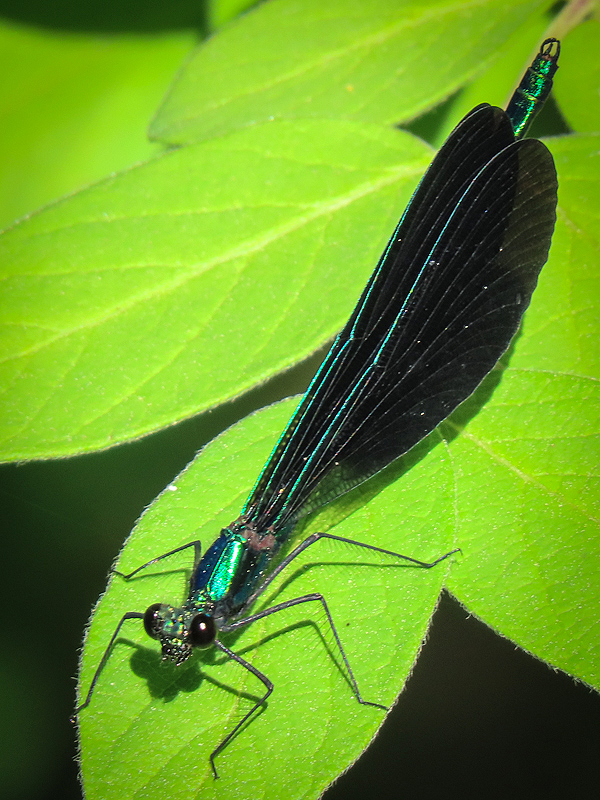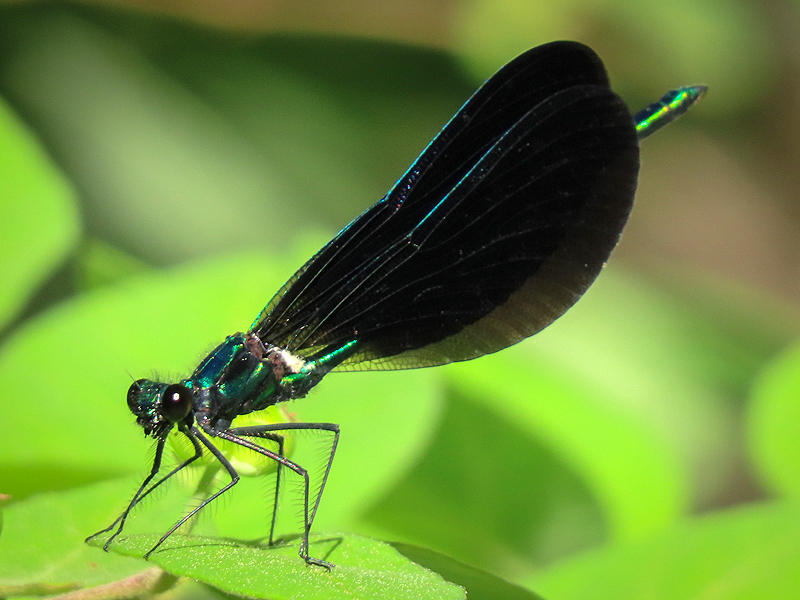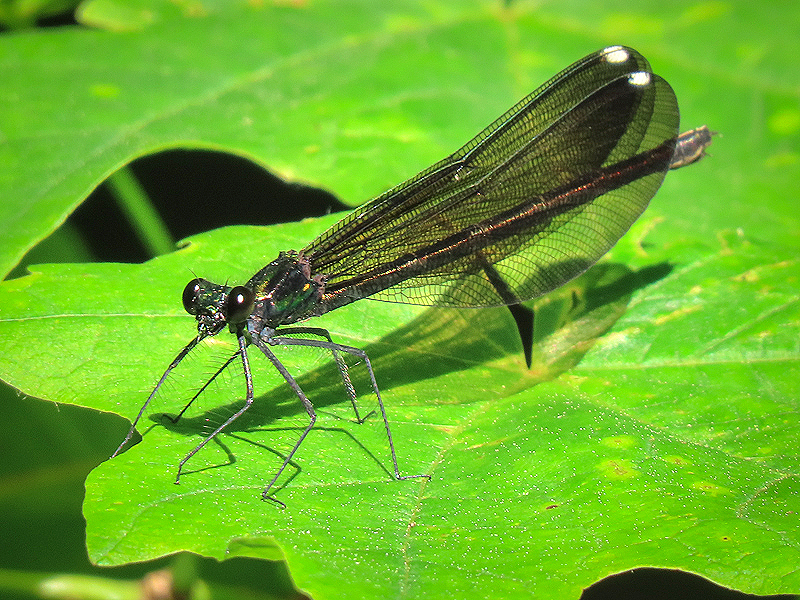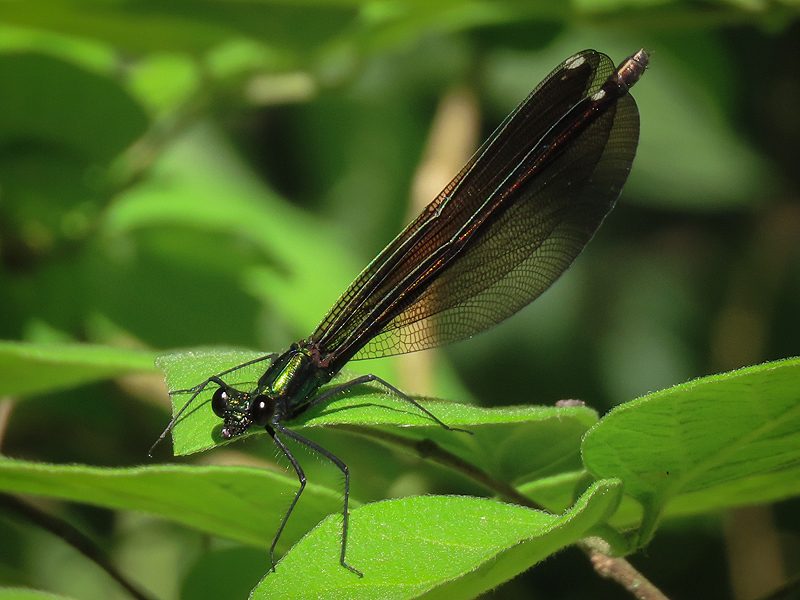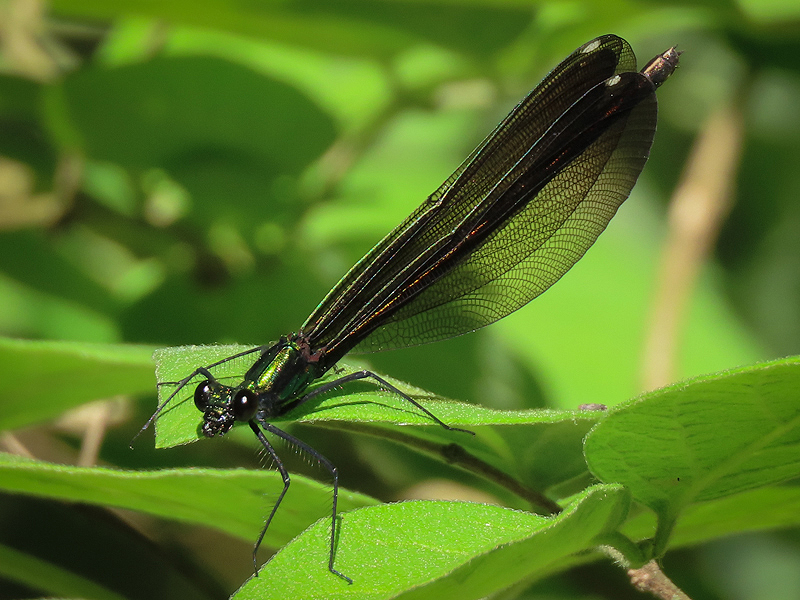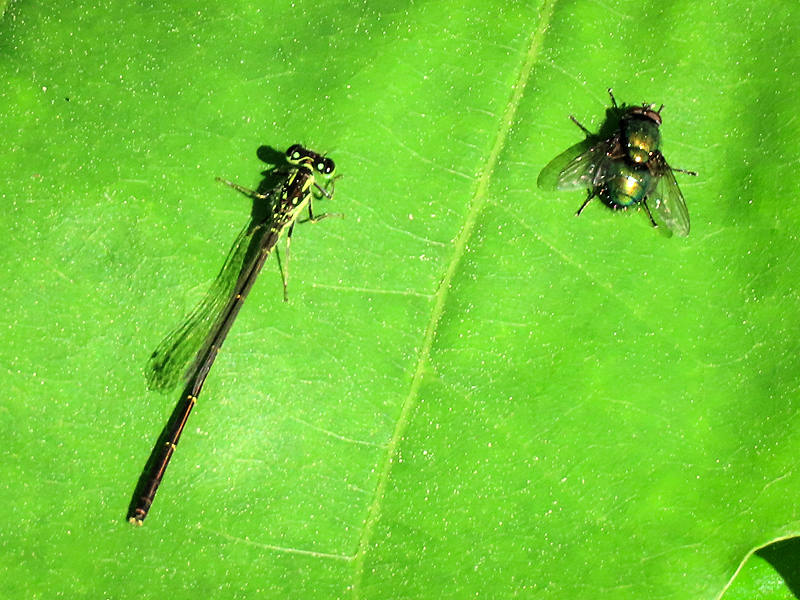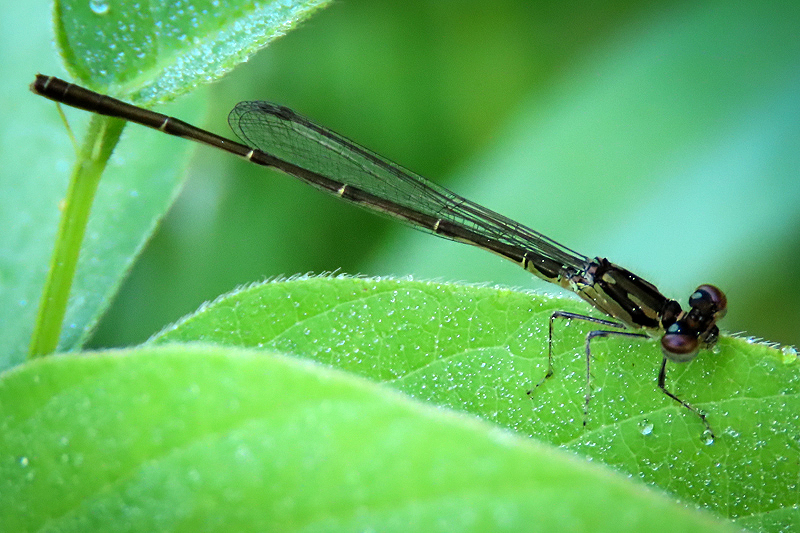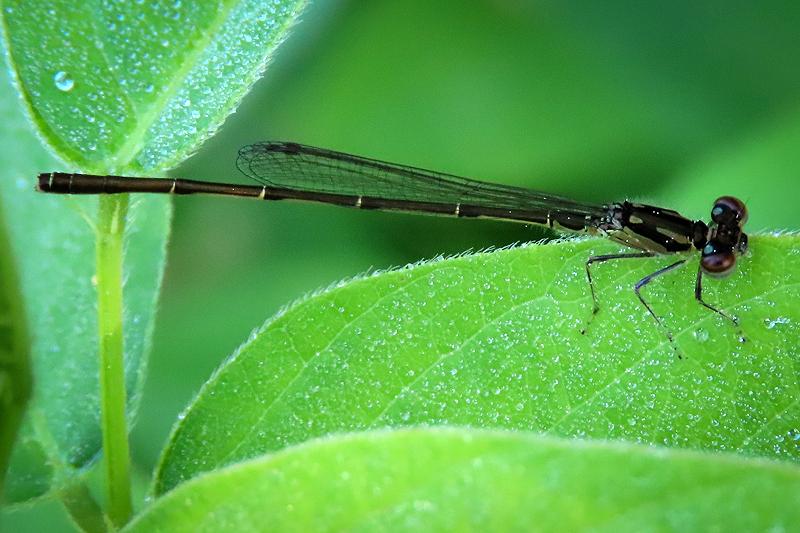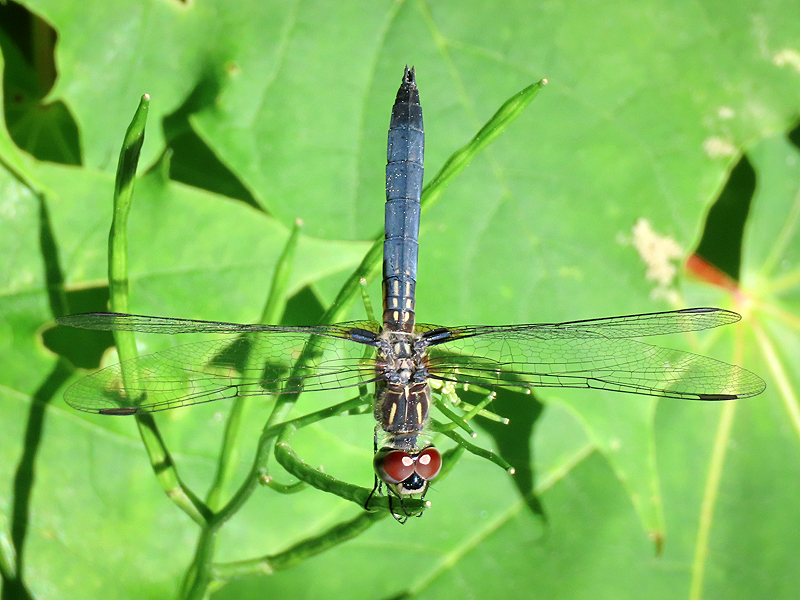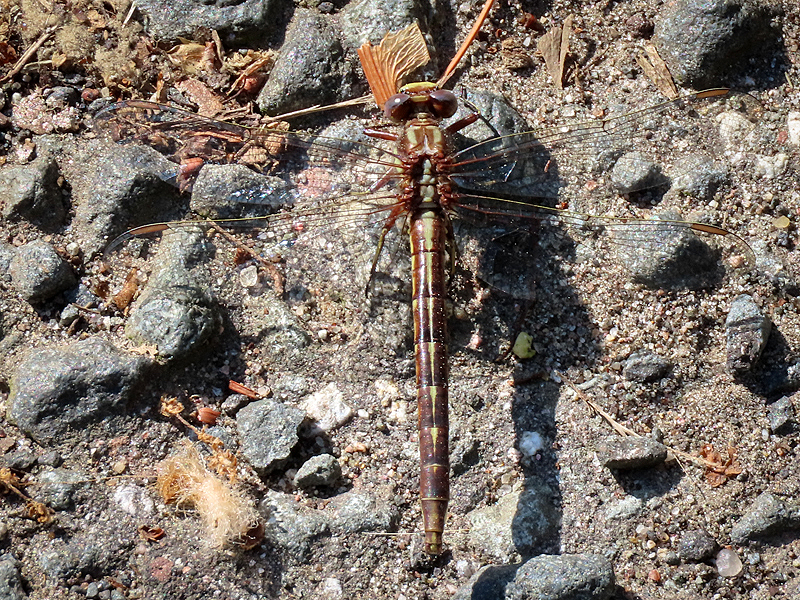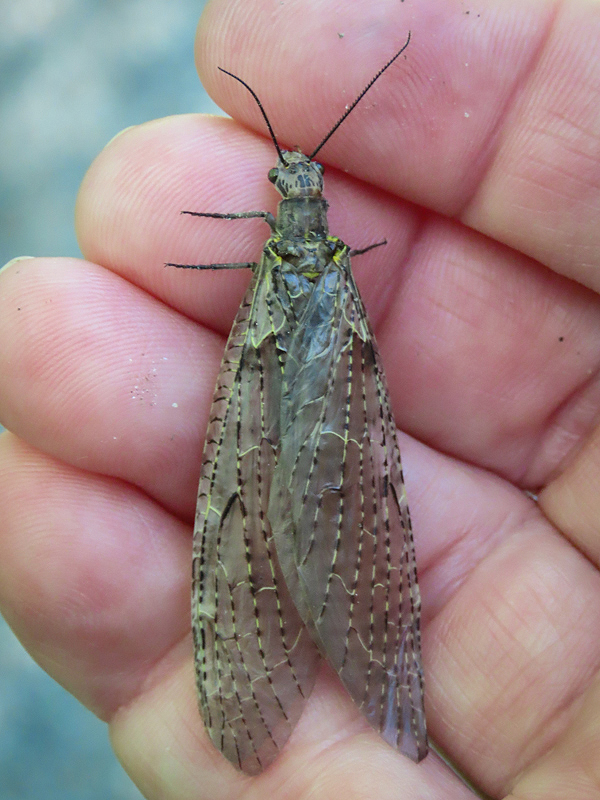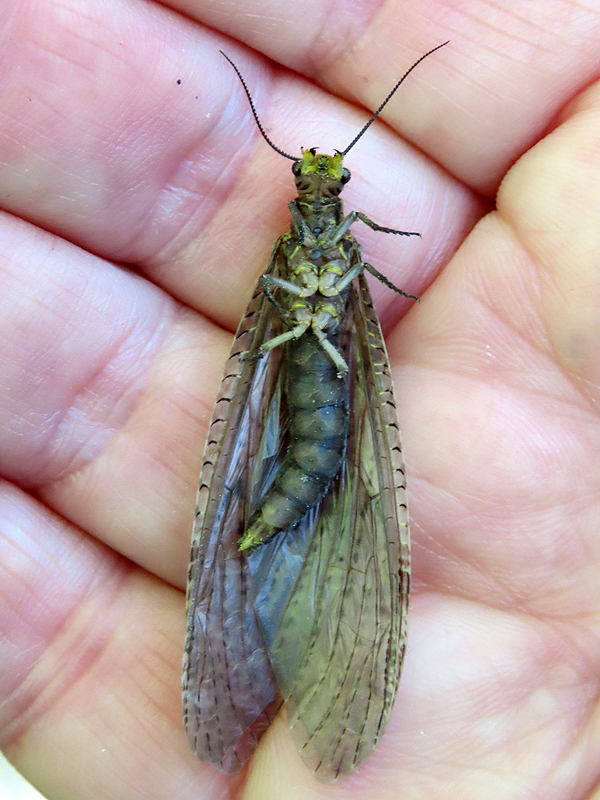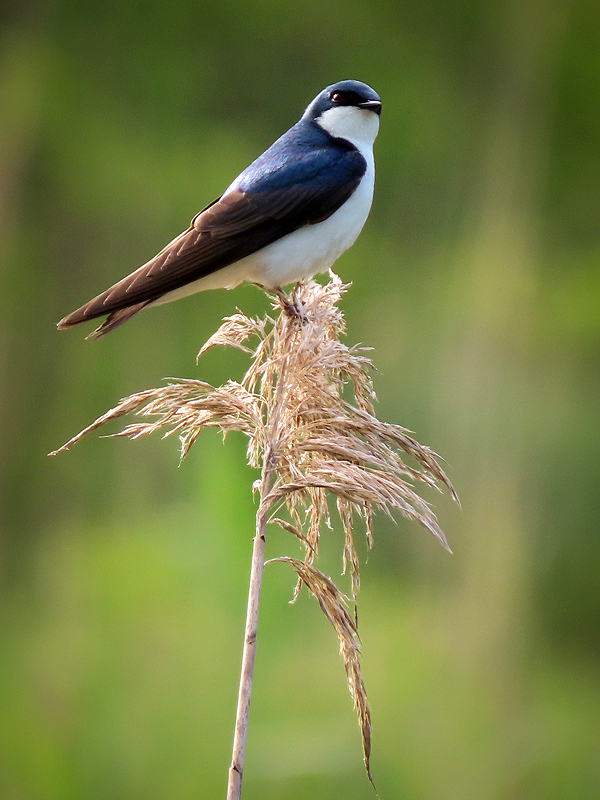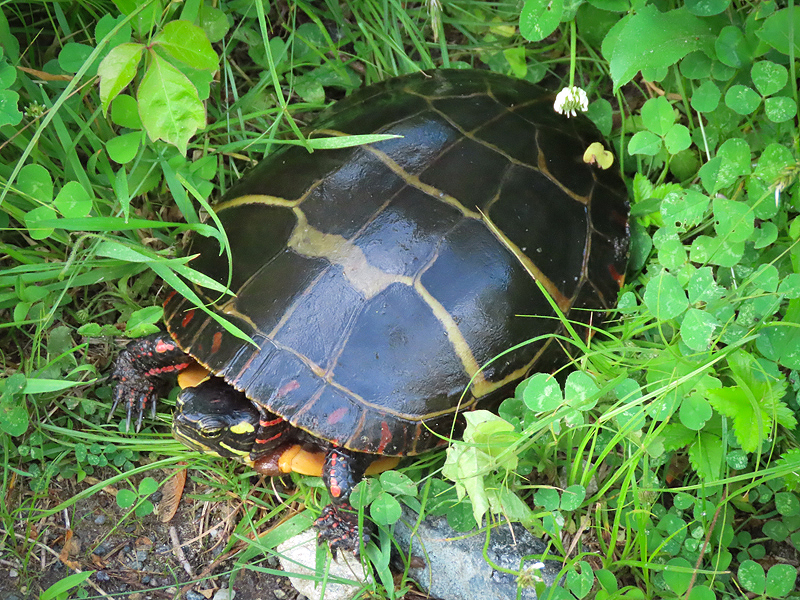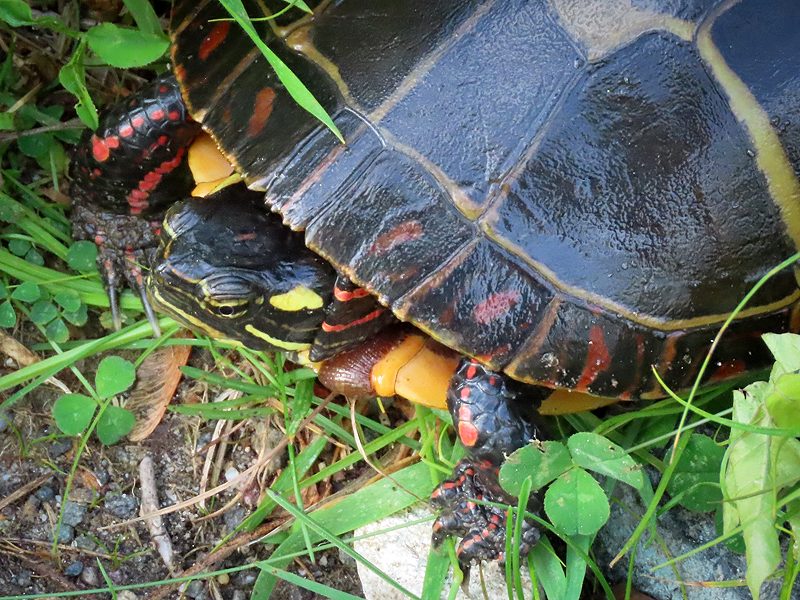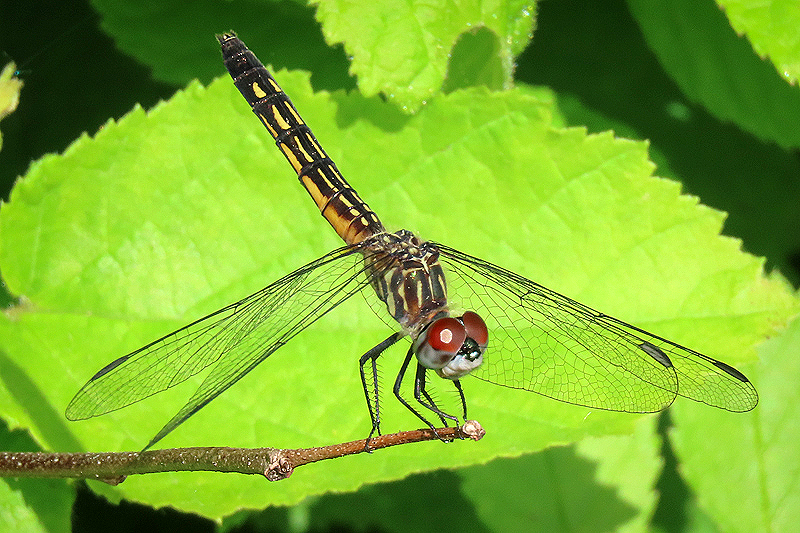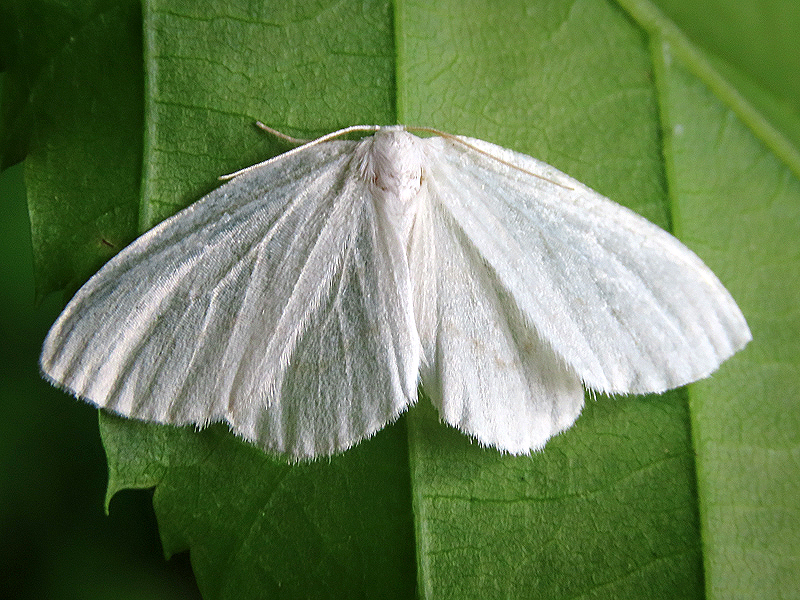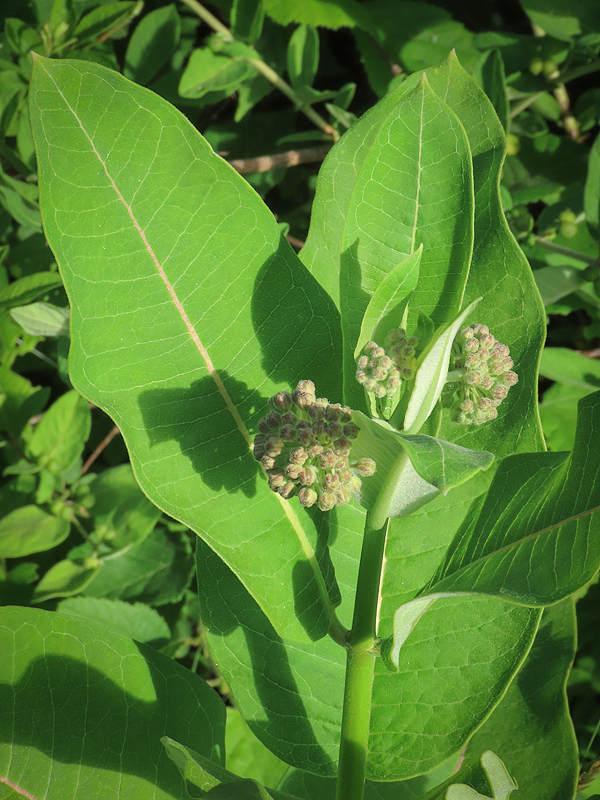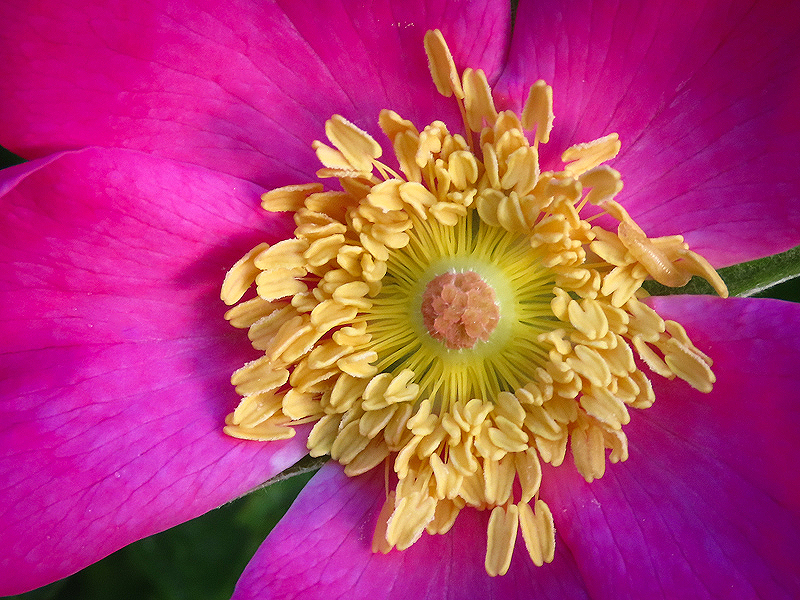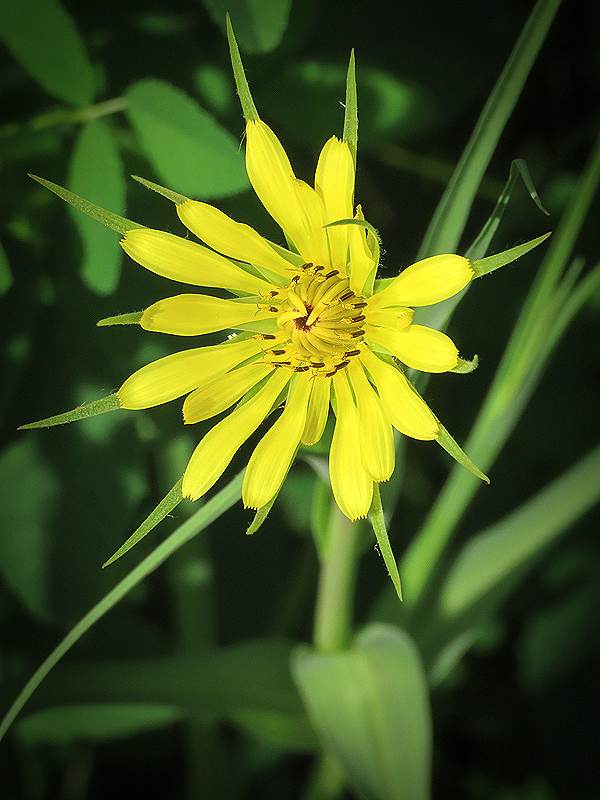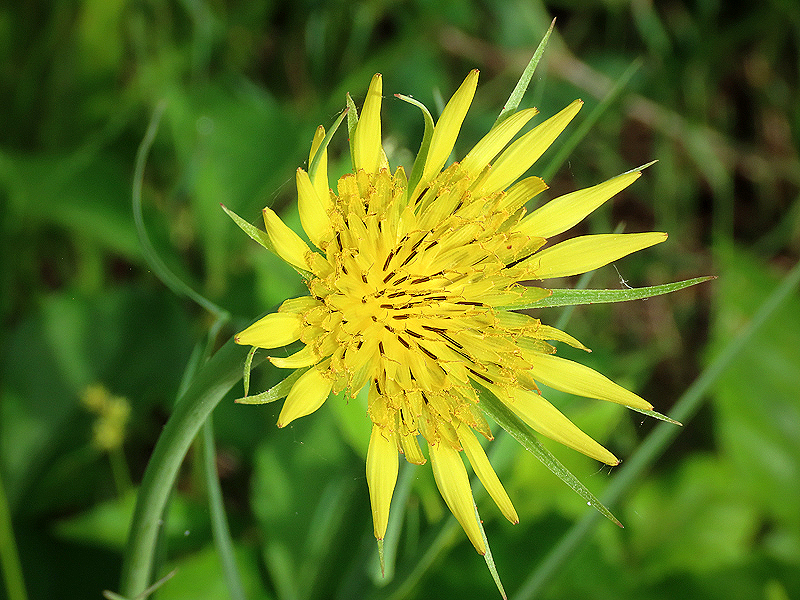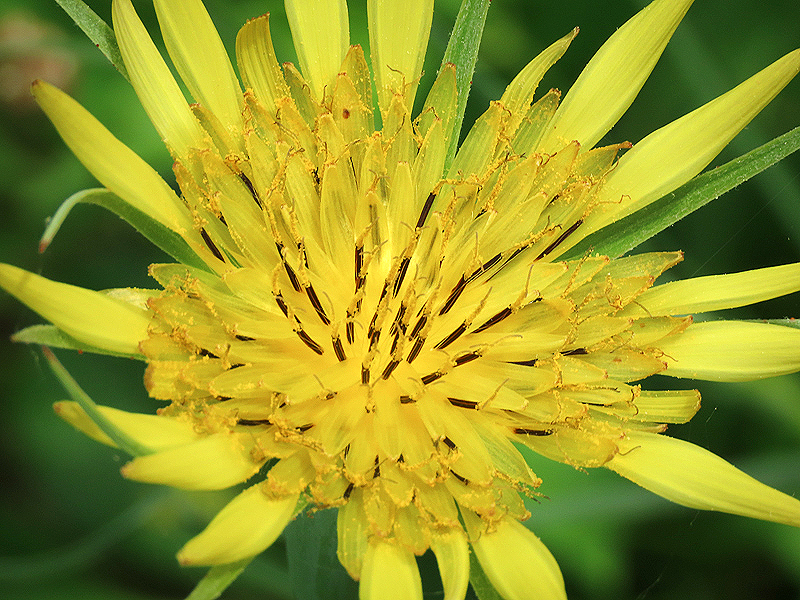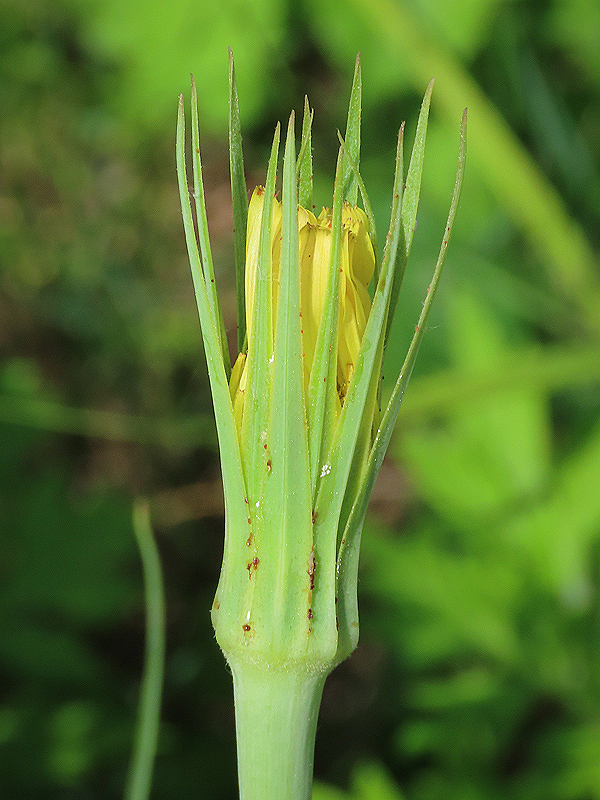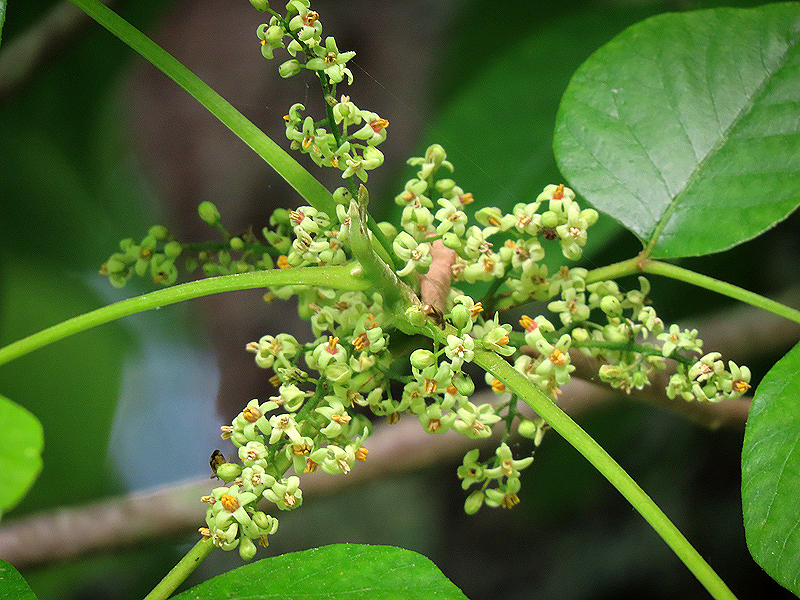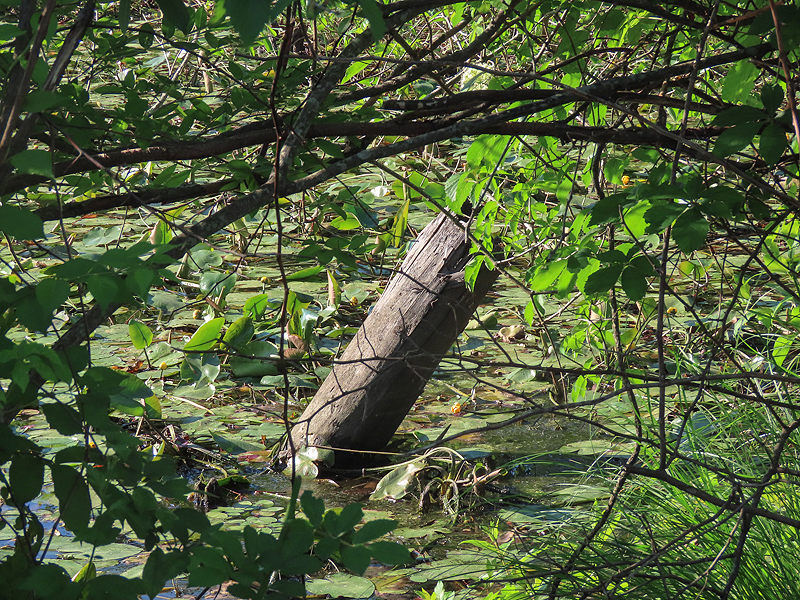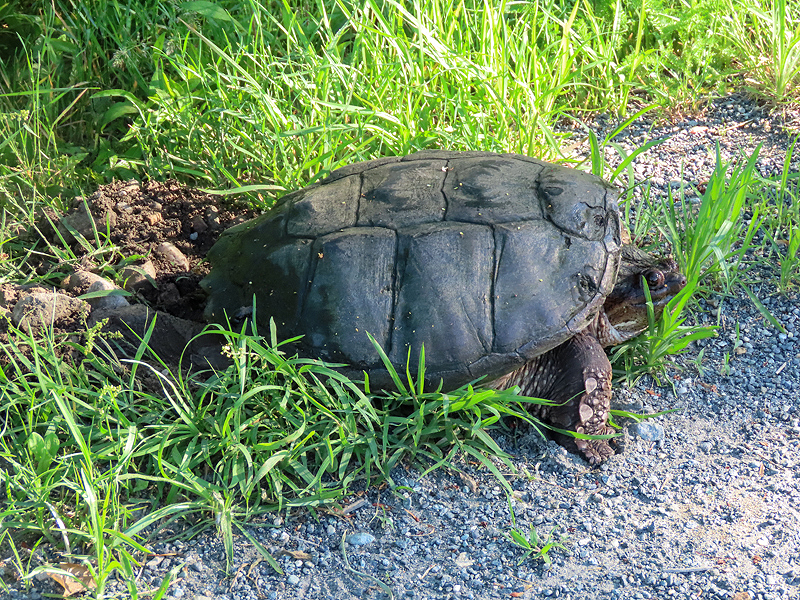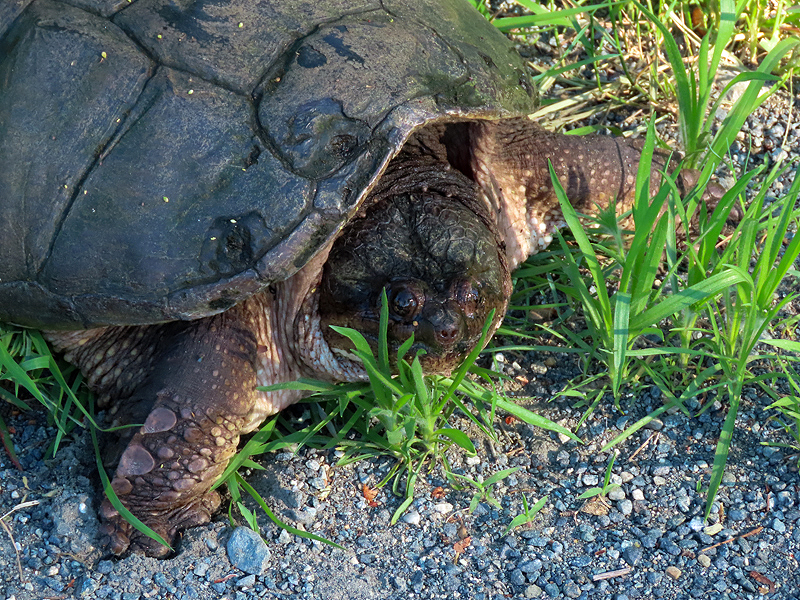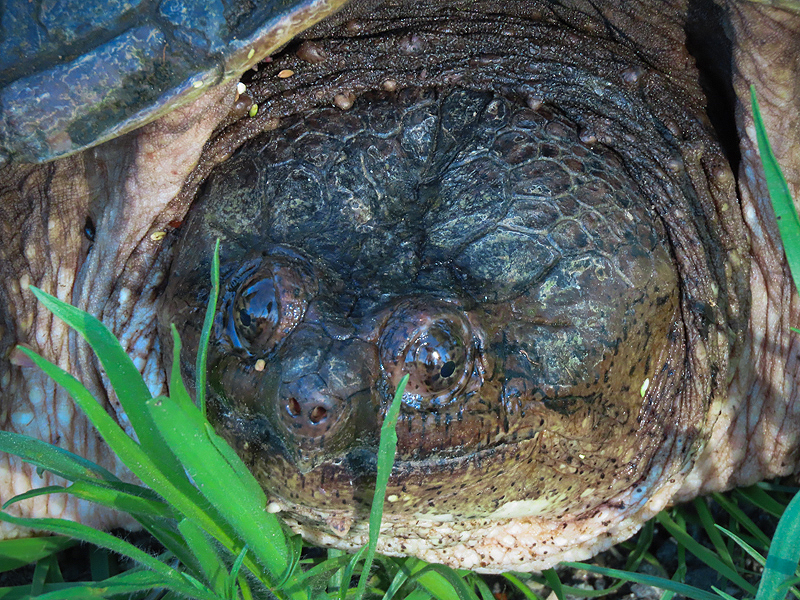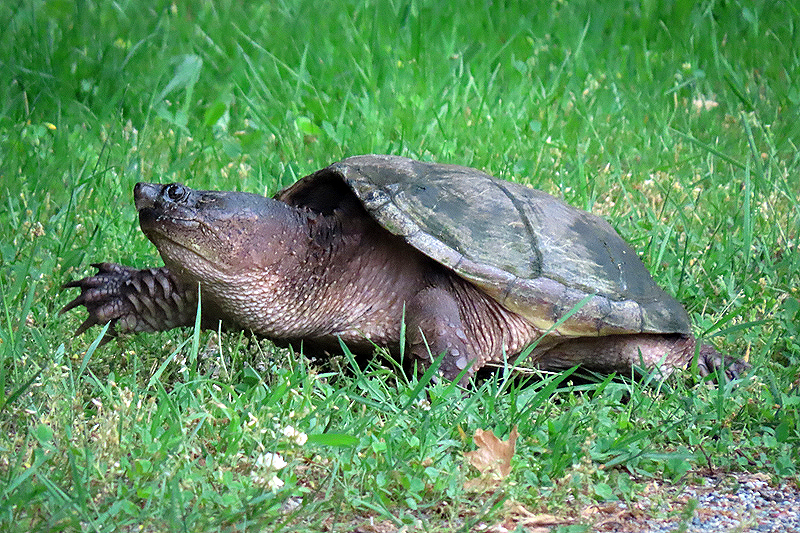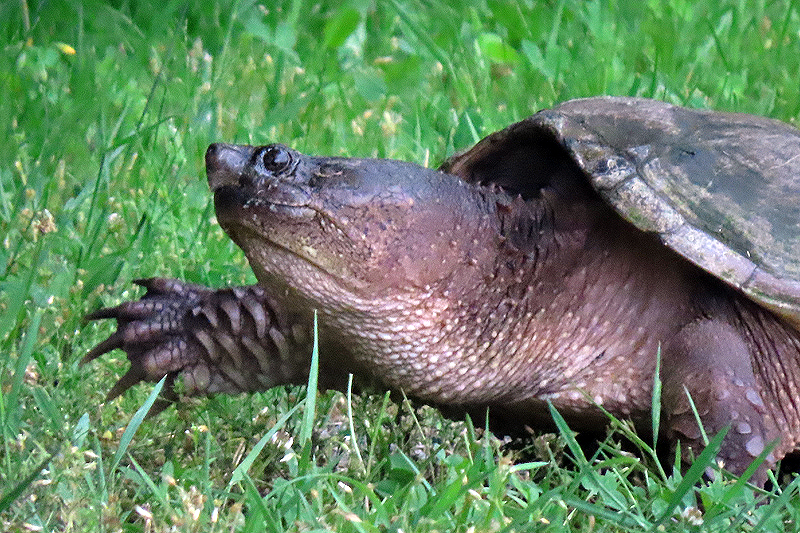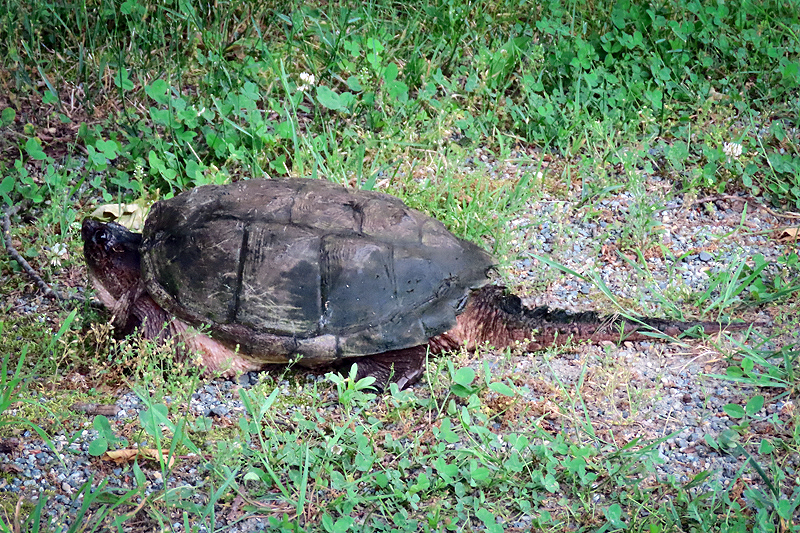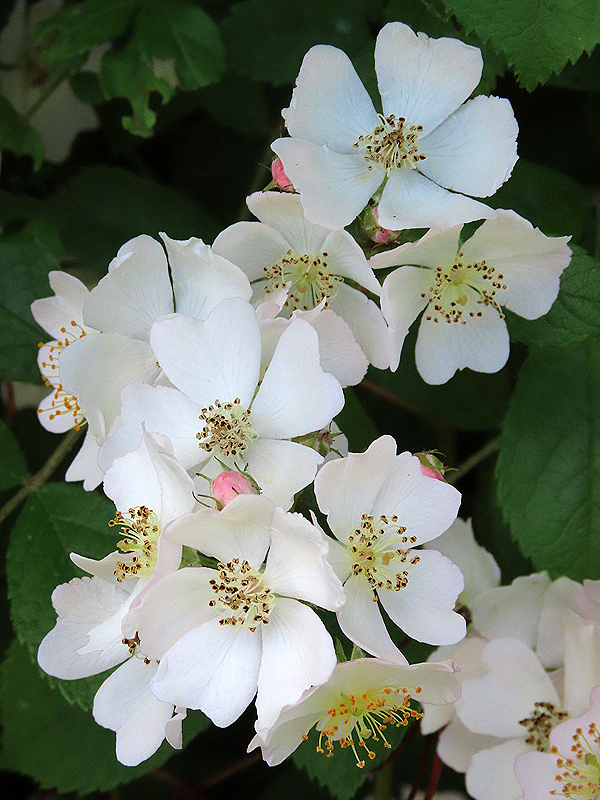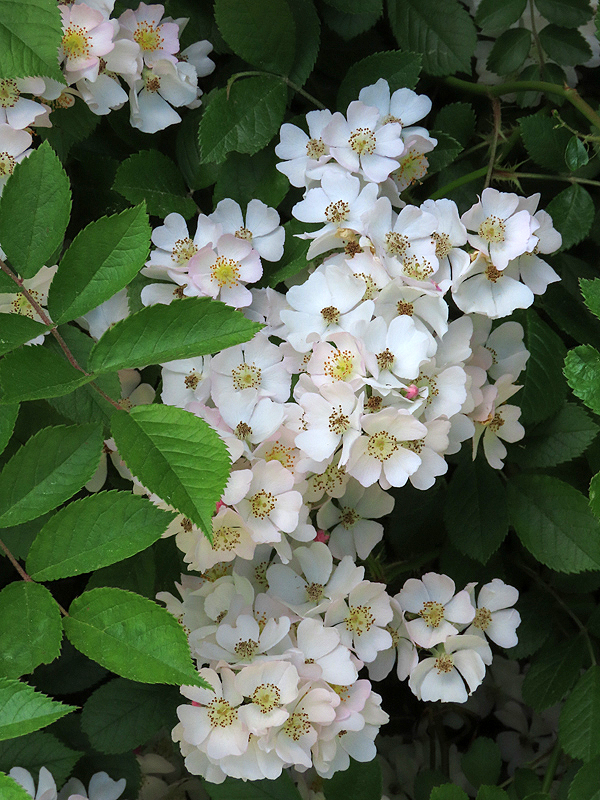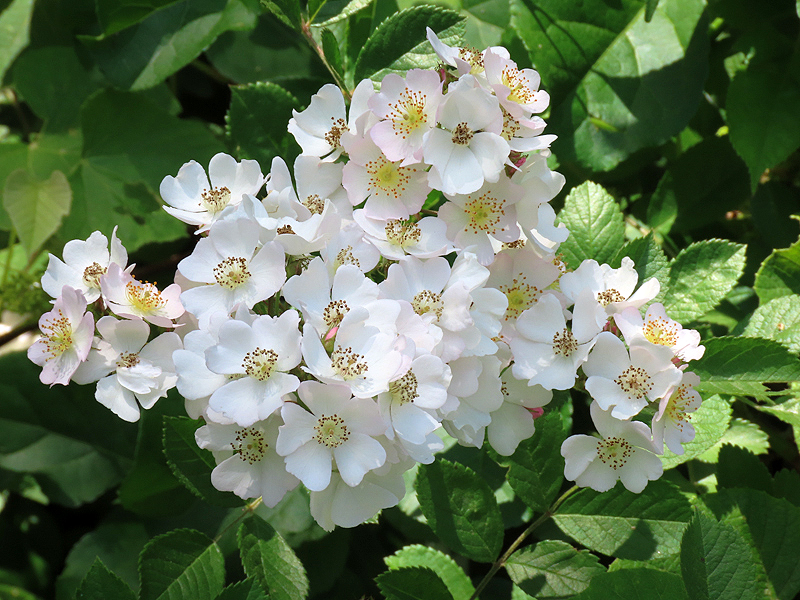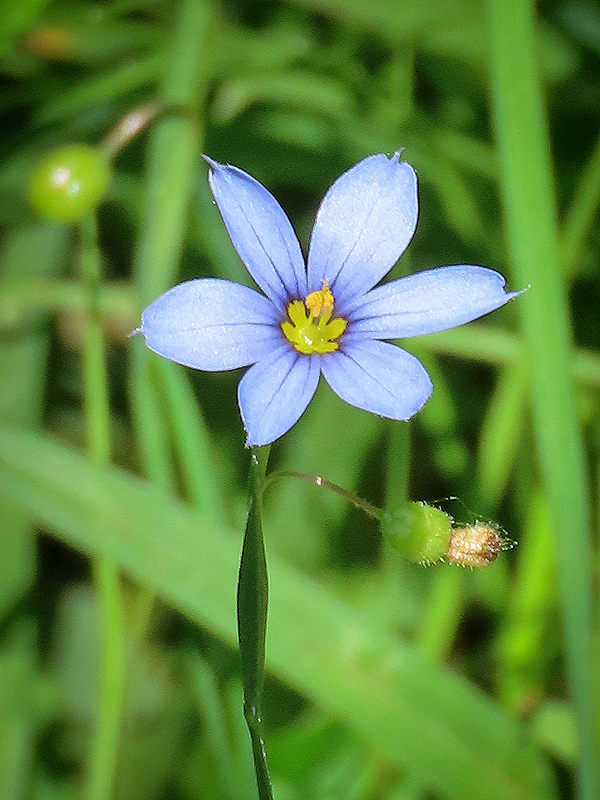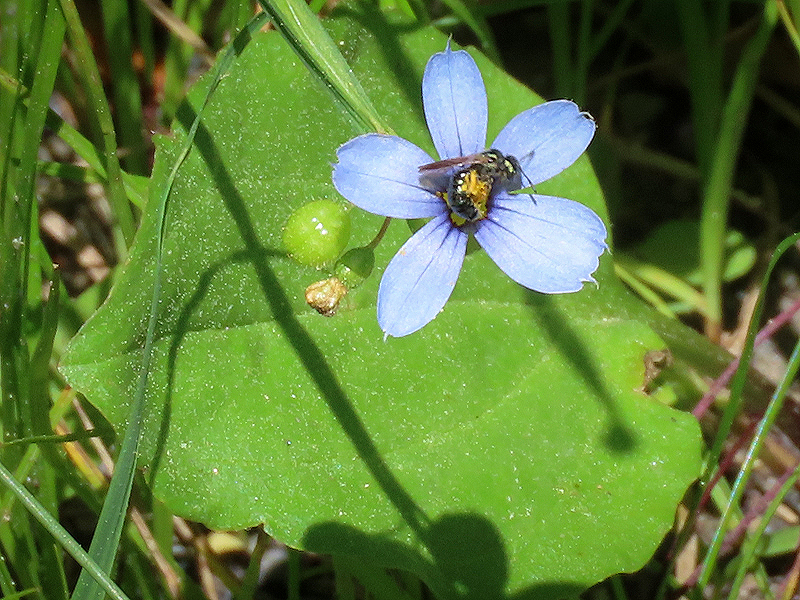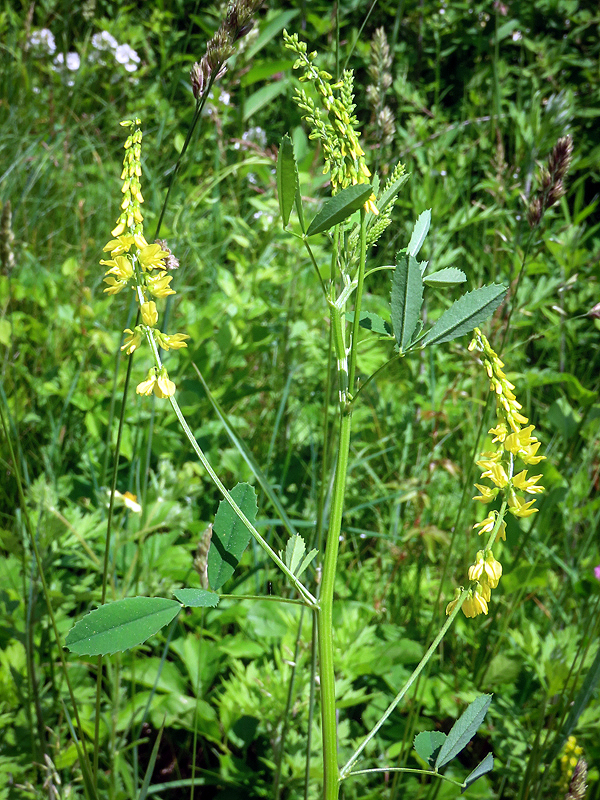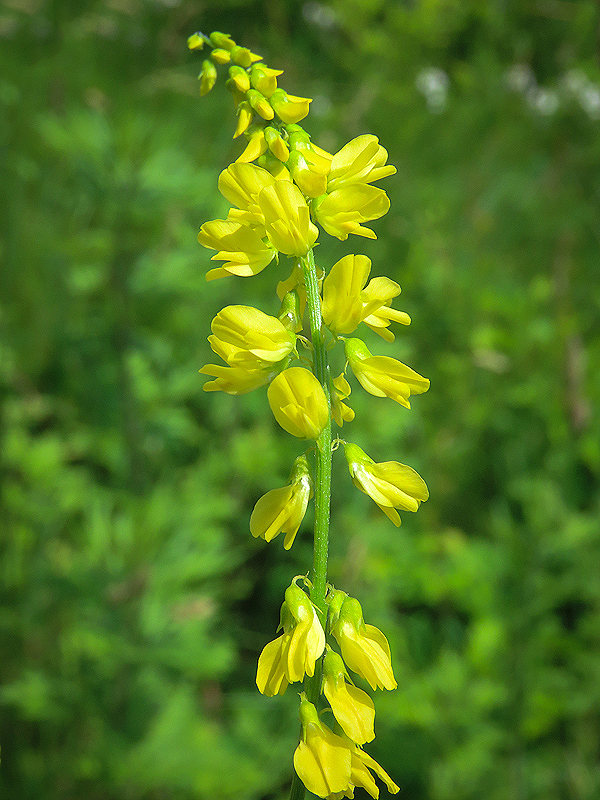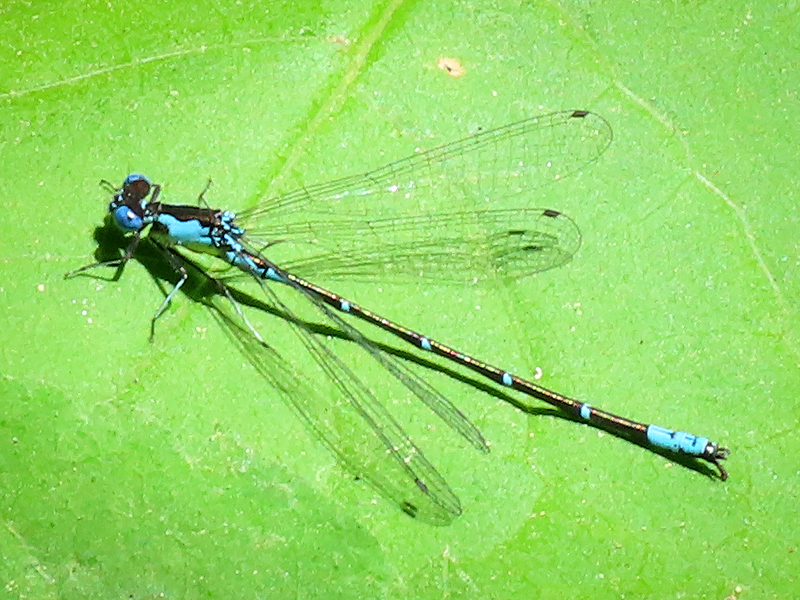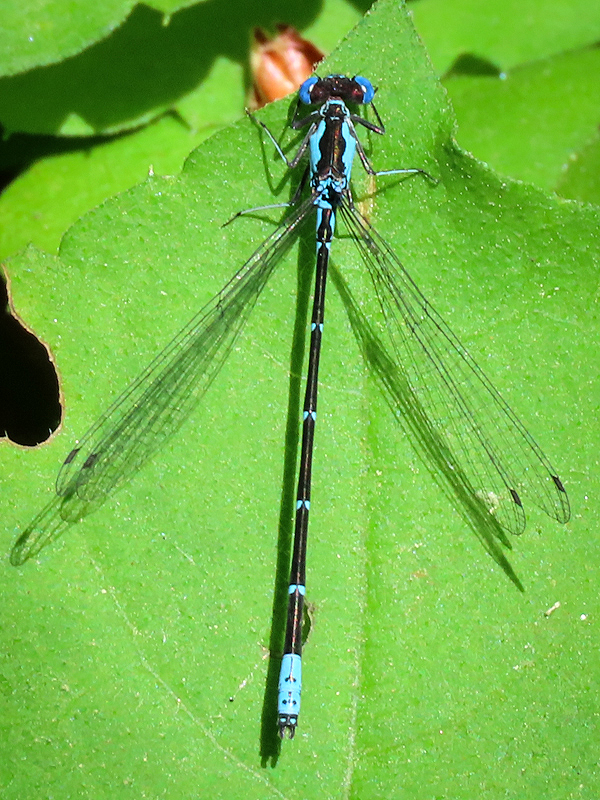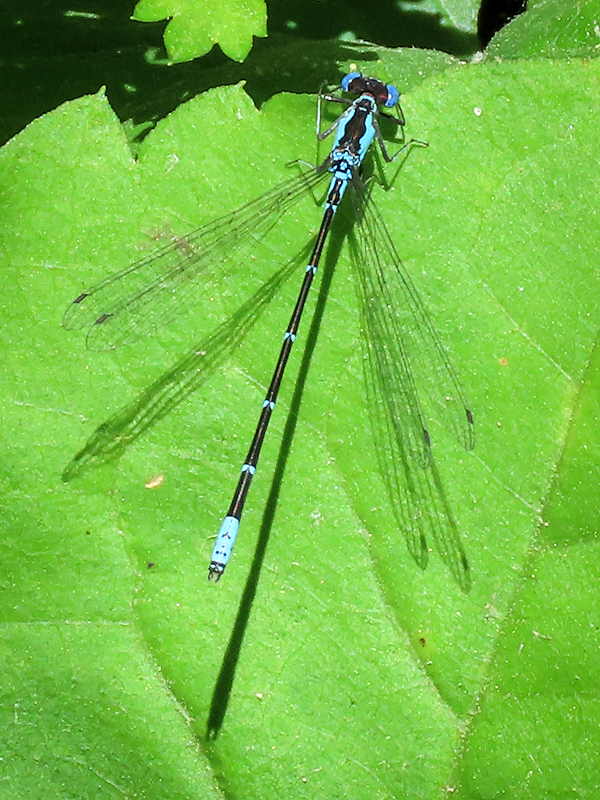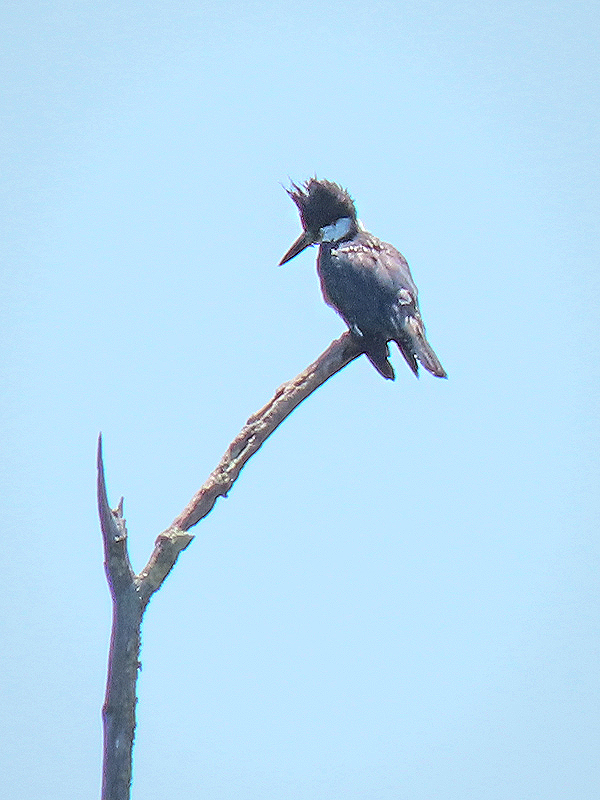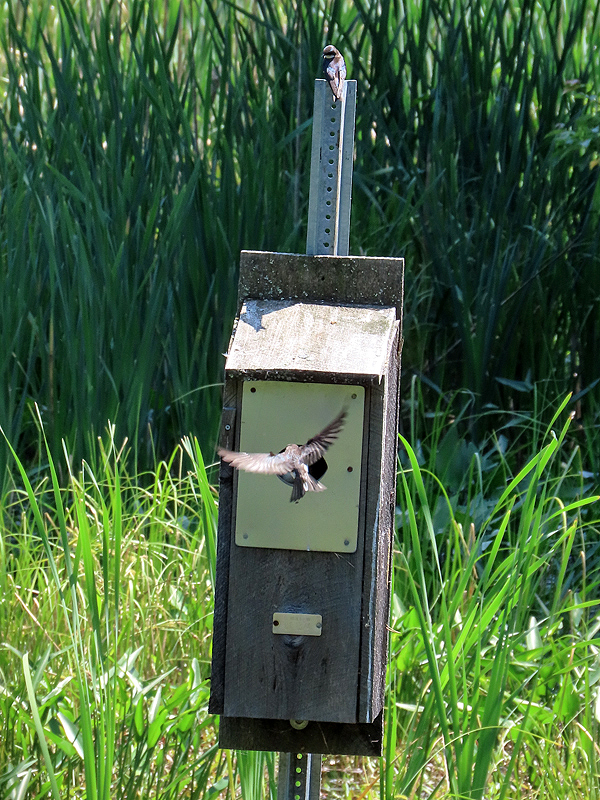Along the Air Line... 2024 - Spring, Part 24 The Air Line Trail in Eastern Connecticut - Stan Malcolm Photos |
HOME: Air Line... 2024 Pages Menu Stan's FlickR Albums |
June 2nd. A male Ebony Jewelwing damselfy (Calopteryx maculata), a favorite species of mine. |
Mostly black with metallic green bodies. |
|
The females are more metallic bronze than metallic green and have a white "stigma" at the wingtips. |
|
|
|
A male Bluet damselfly (probably a Skimming Bluet, Enallagma geminatum) |
Best guess is a male Fragile Forktail damselfly (Ischnura posita) |
This might also be a Fragile Forktail (Ischnura posita). |
|
A male Blue Dasher dragonfly (Pachydiplax longipennis). |
A female Clubtail dragonfly (Gomphus sp.) |
A Fishfly (Order Megaloptera, Family Corydalidae, possibly Summer Fishfly Chauliodes pectinicornis) |
|
The Pink Lady's-slipper orchids (Cypripedium acaule) flowers have gone by. Most still seem to hold their pollinia so haven't contributed their pollen to other plants. |
June 3rd. The male Tree Swallow (Tachycineta bicolor) on guard duty close to the nest box. |
Painted Turtle (Chrysemys picta). Presumably a female looking for a spot to lay her eggs. |
Note the brown leach curled around her shell to the left of her face. |
A female Blue Dasher dragonfliy (Pachydiplax longipennis). |
White Spring Moth (Lomographa vestaliata). |
Common Milkweed (Asclepias syriaca) is in bud. |
Pasture or Carolina Rose (Rosa carolina) has just started blooming. |
|
Wild Salsify (Tragopogon dubius) resembles Goat's Beard but differs in having sepals much longer than the petals. |
This flower was just opening. |
This one nearby fully open. |
They all close up in the afternoon and eventually produce a massive Dandelion-like seed head. |
Later. This bud has closed and the seed head will develop soon. |
Poison Ivy (Toxicodendron radicans) in bloom. |
June 4th. I use this stump as a convenient measure of the marsh's depth. There are times when it is completely submerged. And there are times like now when the marsh is nearly dry. This seems to be happening on a yearly cycle, with late spring and summer the worst. |
A Snapping Turtle (Chelydra serpentina) dislodging eggs from a previous clutch to lay her own in the loose soil. |
Another Snapping Turtle making a new hole from scratch. ;-) |
(Not impressed with my pun.) |
Ancient looking creature. |
June 5th. Snapping Turtle (Chelydra serpentina) not far from the Route 85 trailhead. |
All muscle and armor. |
|
Back in the afternoon for another lap of the marsh. The multiflora Roses (Rosa multiflora) are at their peak of bloom. |
In a few more days, the flowers will show their age. |
|
Blue-eyed Grass (Sisyrinchium sp.). Not a grass, but in the Iris family (Iridaceae). I've seen quite a lot of it this year. |
Looks like a Sweat Bee (Family Halictidae, Augochloropsis metallica) harvesting pollen. |
Rough-fruited Cinquefoil (Potentilla recta). |
Yellow Sweet Clover (Melilotus officinalis). |
Typical pea flowers up close. |
One of half a dozen male Aurora Damselflies (Chromagrion conditum). |
|
|
A distant, backlit Belted Kingfisher (Ceryle alcyon), |
I'm not sure what's going on here. There's a female Tree Swallow (Tachycineta bicolor) atop the Wood Duck box, another female flying at the entrance, and a third bird (male?) looking out from the opening. |
